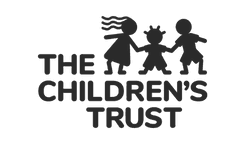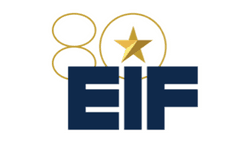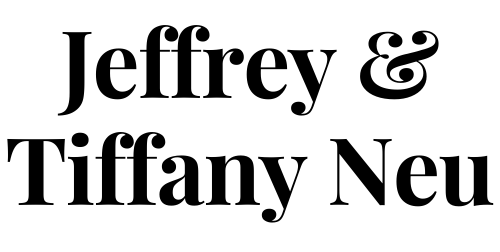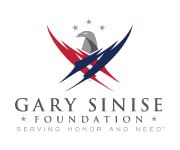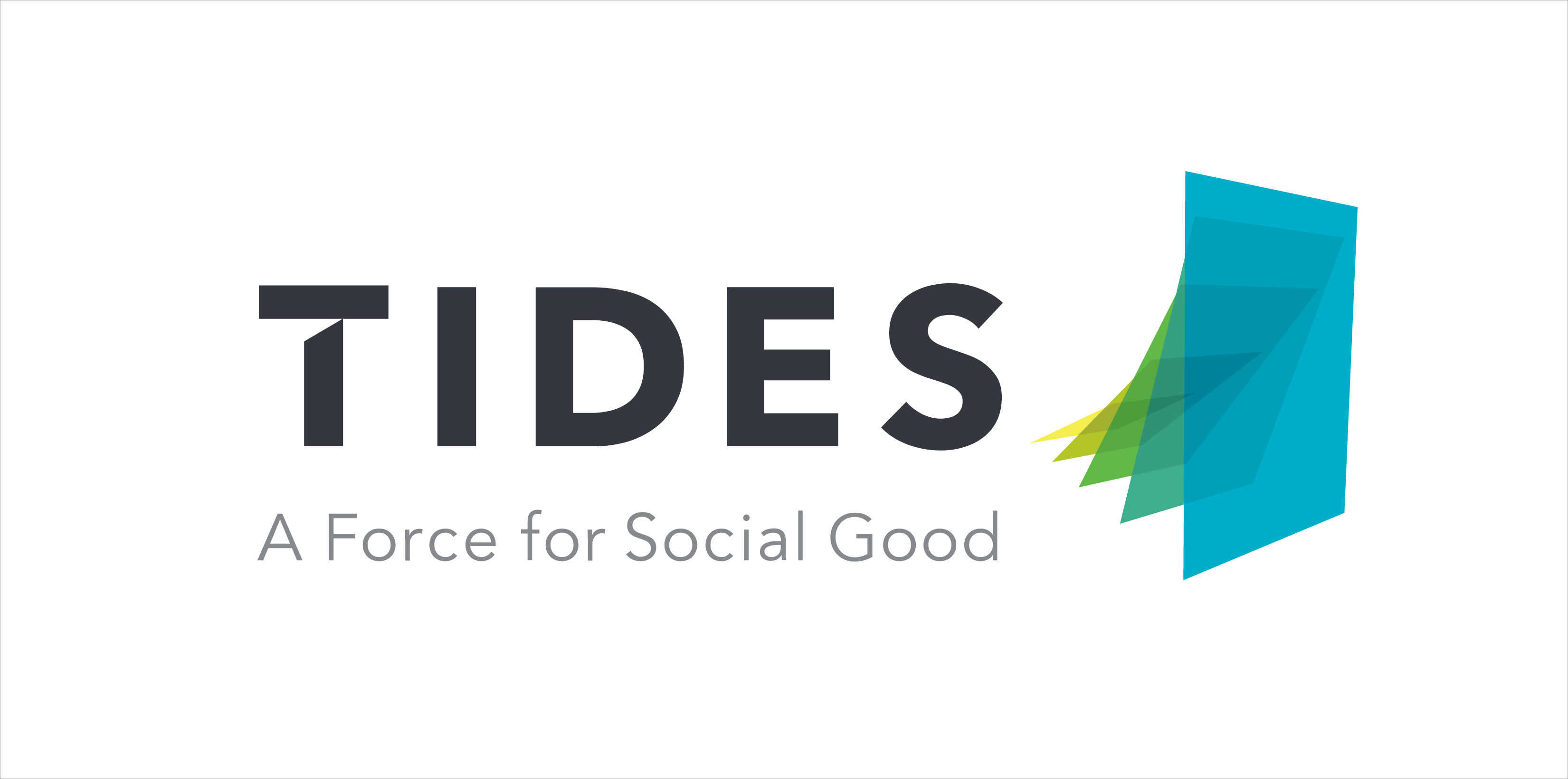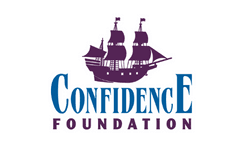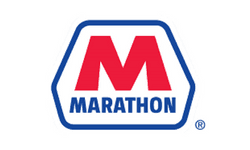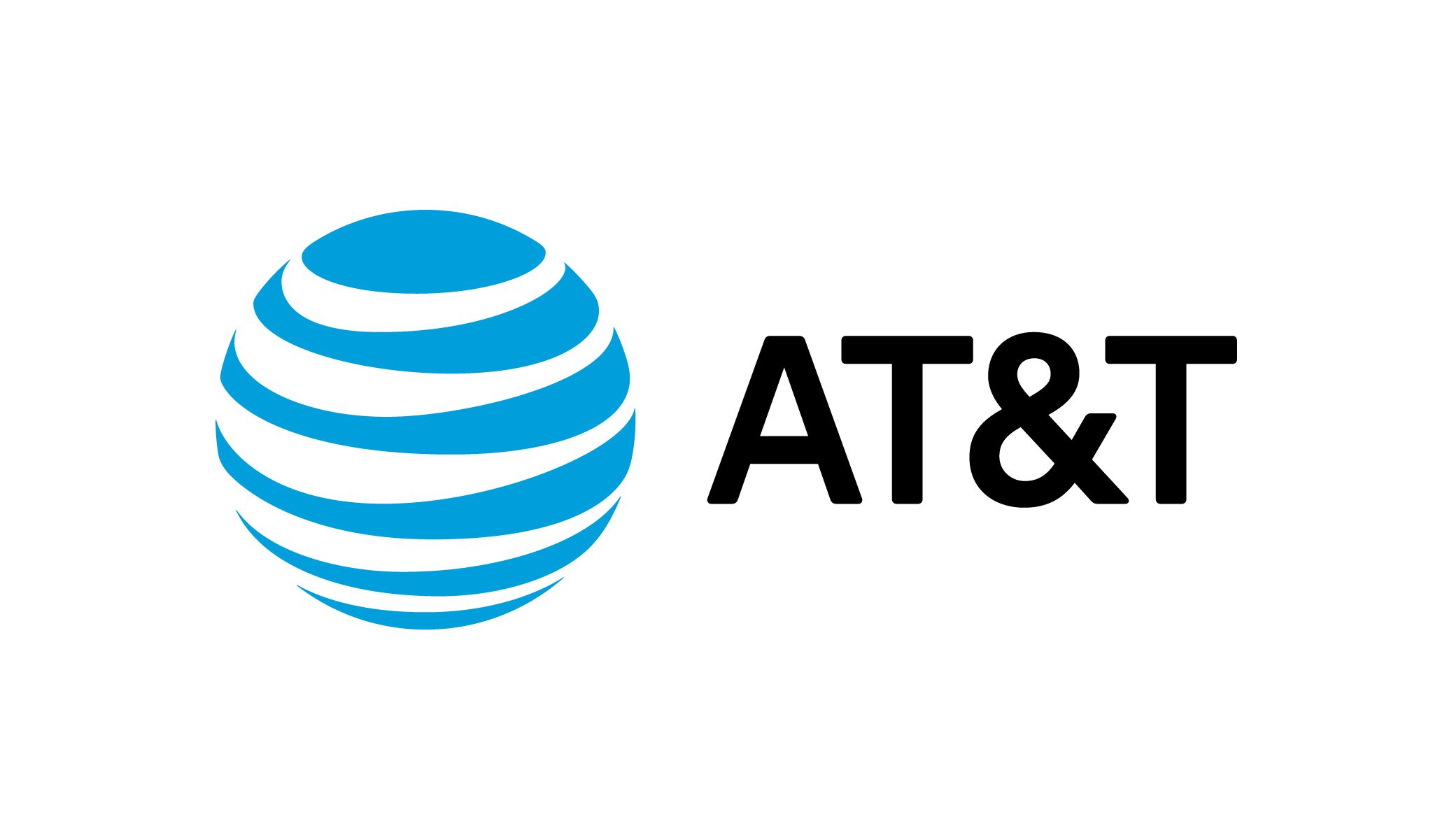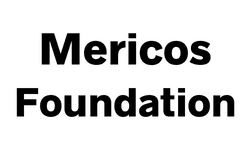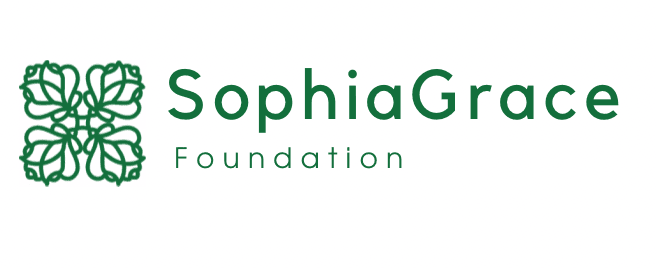2021-2022 FUNDING HIGHLIGHTS
The 2021-22 fiscal year that ended on June 30, 2022, was a difficult transitional period for all, particularly the nonprofit sector.
Despite the struggles of operating in a global pandemic, the Los Angeles Fire Department (LAFD) Foundation provided more than $2.6 million towards our firefighters’ most pressing needs.
This page reflects how a community of loyal donors can impact the LAFD’s ability to protect the people of Los Angeles. Every donation over the past 12 months, no matter the amount, helped make the following successes possible.
COVID RESPONSE RESOURCES + SUPPORT
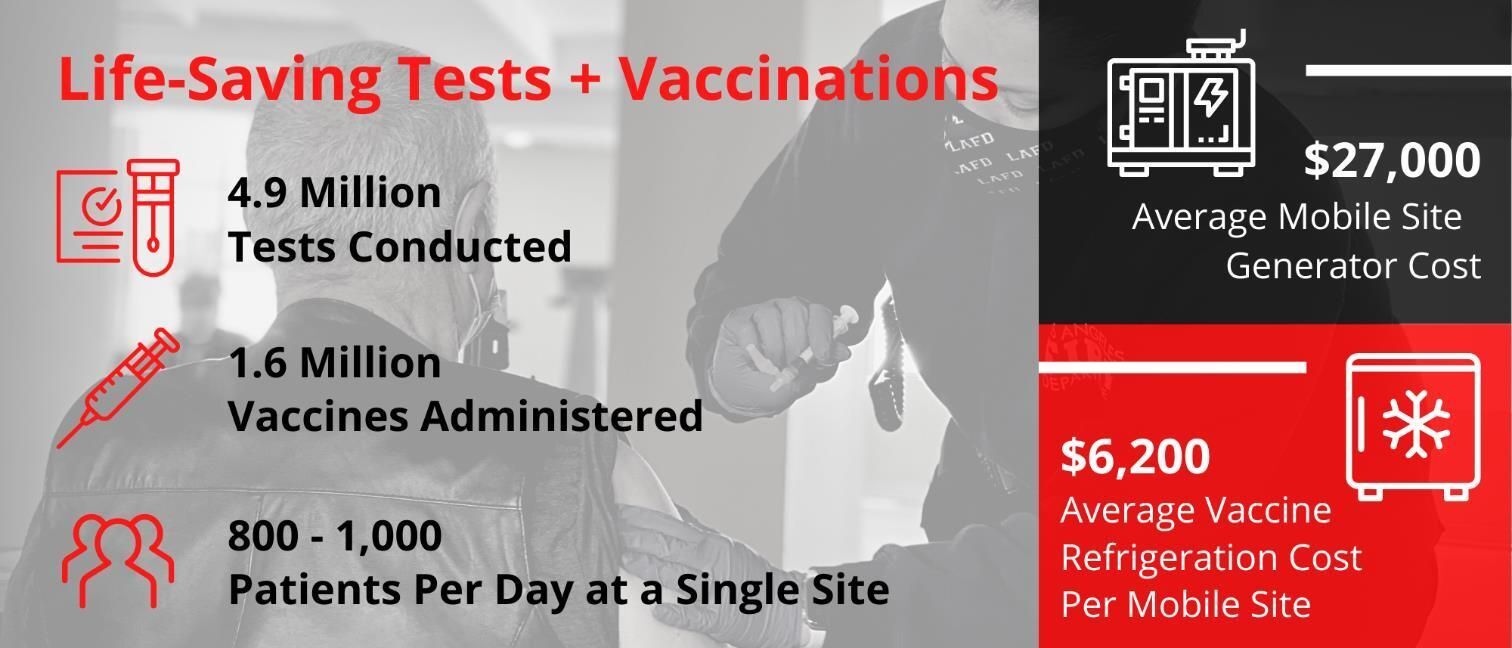
Last year, supply chain challenges and budgetary constraints hindered the LAFD COVID Division’s ability to obtain needed resources to provide testing and vaccination services to as many Angelenos as possible. Items ranging from refrigerator units to surge protectors were in short supply as the Department expanded efforts to provide wider access to underserved communities.
Emergency funding from the LAFD Foundation helped cover infrastructure and logistical equipment costs (e.g., portable generators, computers, cold storage) to power the Dodger Stadium and Crenshaw Christian sites - two of the largest, and longest-running testing and vaccination sites.
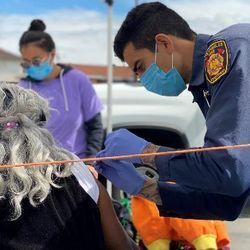
A firefighter/paramedic administers a vaccine at a one-day community site in South Los Angeles.
The LAFD Foundation also provided funding for 91 community sites, and nearly 100 mobile clinics for senior centers, assisted living communities, nursing homes, and subsidized housing locations.
Lastly, the LAFD Foundation purchased electrical system upgrades to safeguard the power supply for the LAFD Medical Supply Unit's freezers and refrigerators. Donations helped protect the safety and integrity of the vaccine resources at the LAFD's central supply hub serving more than one million Angelenos.
"Our work would not have been possible without the resources supplied by the LAFD Foundation and its supporters. Thanks to those donations, hundreds of thousands of Angelenos, and their families, have the protection and peace of mind that comes with being vaccinated."
Battalion Chief Michael Castillo
Liaison Officer for the LAFD’s COVID Division
SUPPLYING ESSENTIAL EQUIPMENT FOR FIRE STATIONS
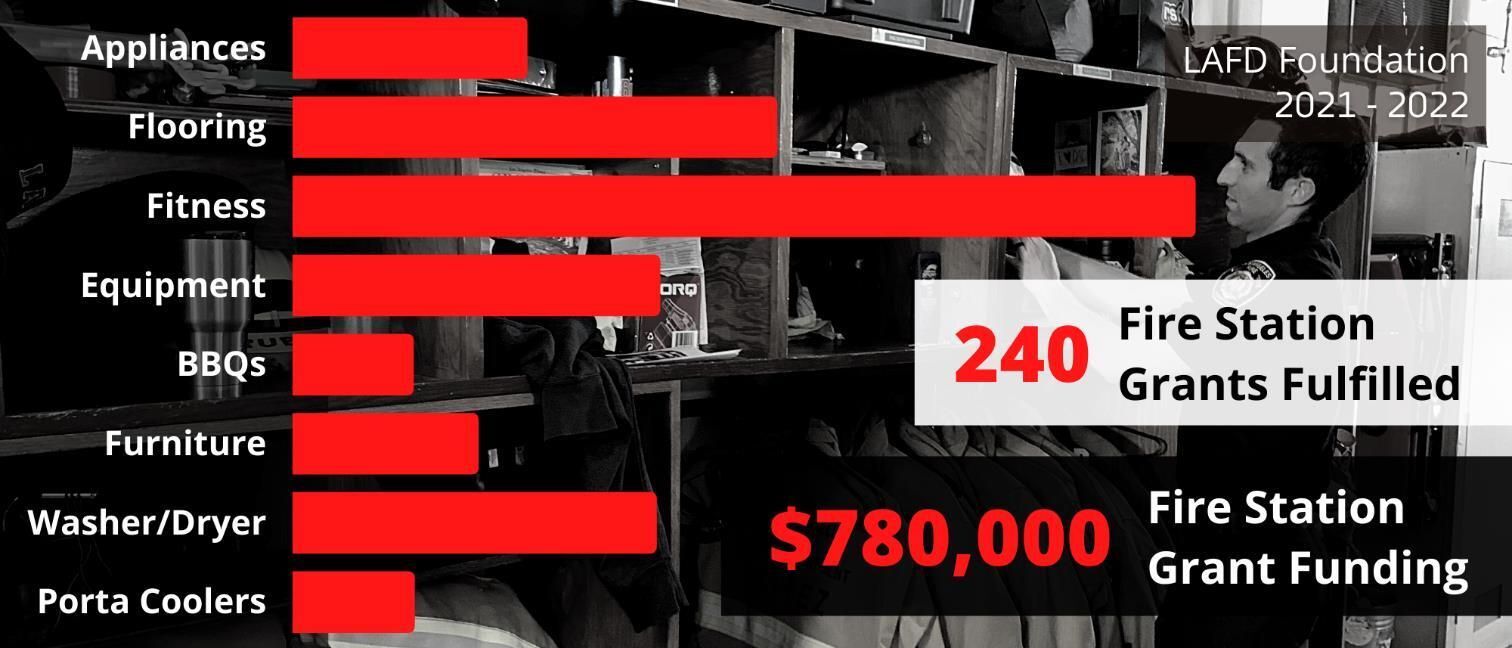
Fire stations function as a home away from home for the four to twenty-plus members on duty at any given time. Between emergency calls, mandatory apparatus maintenance, and training obligations, firefighters must squeeze in time for cooking, personal fitness, and everyday household responsibilities.
As a result of irregular daily regimens, items like dishwashers, dryers, and treadmills endure continuous use and sustain heavy wear and tear. When an essential appliance breaks down, the compounding impact can make living conditions even tougher.
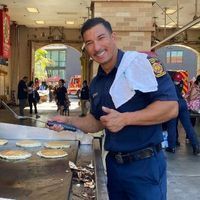
A firefighter/paramedic administers a vaccine at a one-day community site in South Los Angeles.
The Adopt-a-Fire Station program (AAFS) offers families and neighborhoods a way to give back to their local station and say thank you for the selfless service firefighters deliver each day. Through the AAFS program, fire stations can request the replacement of aging or broken appliances, mattresses, fitness equipment, tools, and more. This past funding cycle, more than 1,000 invoices, and 240 grant requests were fulfilled.
“The mattresses, porta-coolers (apparatus bay fans), air purifiers, and other resources provided by the LAFD Foundation are so greatly appreciated by our members. These items go a long way towards improving our living and working conditions. The impact of the [AAFS] program is really evident for stations in underserved areas where they would have a much tougher time replacing everyday essentials like a washer or fridge. This program makes a difference.”
Captain Branden Silverman
LAFD Fire Station 74, Tujunga
FIREFIGHTER HEALTH, SAFETY, AND WELLNESS
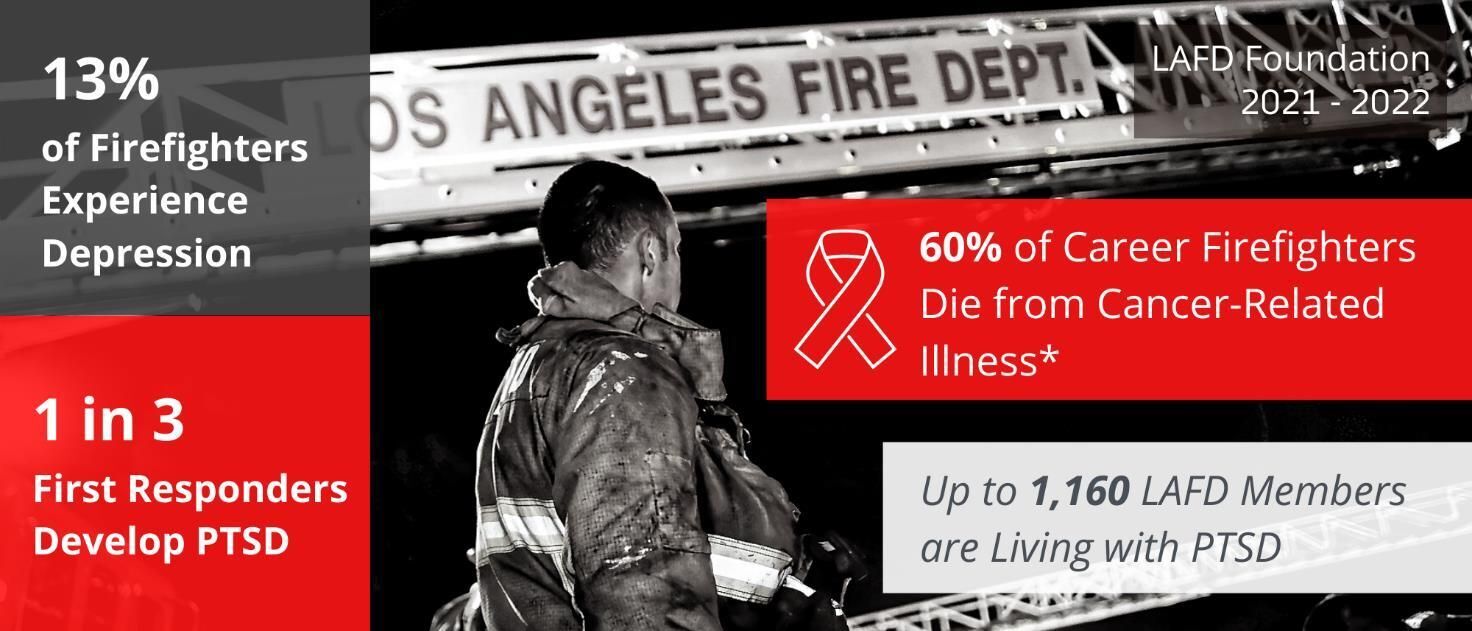
*Cancer-related deaths sourced from the International Association of Fire Fighters (IAFF).
At the pandemic's peak, more than a third of the LAFD's workforce was ill or under quarantine. The remaining available firefighters rose to meet unprecedented challenges and carry the incident load of more than 1,200 daily emergencies.
Two years' worth of pandemic, societal, and other stressors led the LAFD’s Behavioral Health Program to treat more clients than ever. Your generous support has helped increase access to counseling services for members involved in traumatic events or working to overcome mental health-related struggles.
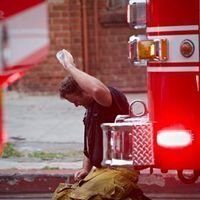
Firefighters and paramedics, especially in the LAFD’s busiest service areas, can experience multiple traumatic events in a single shift.
The LAFD Foundation funded specialized training for the Department’s fire psychologists on the impacts of the COVID-19 pandemic, including Dialectical & Behavioral Based Therapy (Distress Tolerance), Acceptance and Commitment Therapy (COVID-19/Chronic Illness), and Cognitive Process Therapy. Donations also covered stipends and other services to augment the group therapy program, alleviate caseload backlog, and develop a pipeline of future fire psychologists.
"Pandemic stressors and struggles are evident in our firefighters. Helping them identify the signs and symptoms of stress is key to preventing anxiety, depression, mood disorders, and even suicide. We are protecting the Fire Department's greatest asset – our firefighters. Support from the [LAFD] Foundation and its donors enables us to expand firefighters' access to counseling and support resources in hopes of preventing mental health-related tragedies."
Dr. Krystle Madrid, Psy.D.
Fire Psychologist, LAFD Behavioral Health Unit
CANINE THERAPY PROGRAM
The LAFD Foundation provides 100% of the funding for the LAFD’s Canine Therapy Program - another resource to help firefighters experiencing psychological or emotional crisis.
A certified therapy dog and handler duo are deployed to critical incidents and situations to help firefighters manage the heavy stress and emotions they experience when responding to tragedies.
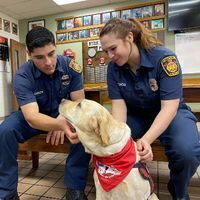
Willow, the LAFD’s official therapy canine, visits with members at Fire Station 27 in Hollywood.
Therapy dogs react when a firefighter exhibits signs (physical cues) of anxiety or emotional spiraling. According to Tom Tackett, founder, and president of the Patriotic Service Dog Foundation (PSDF), “a therapy dog provides a safe way for the release of feelings and emotions. They help to balance cortisol levels without the stigma of judgment."
"These animals do a remarkable job of sensing who to approach, who might need a bit of comfort or consoling. As handlers, we notice the immediate shift in a person's demeanor even after just a moment of connecting with a therapy dog. Often, the person they are comforting doesn't even realize what's happening. They just seem to feel better.
Since we acquired Willow, we have assisted dozens of firefighters on a one-on-one basis, and in group sessions. We are grateful for this program and for the donors who helped support it.”
Battalion Chief Robert Takeshita
LAFD Peer Support Counselor and Therapy Dog Handler
EXTRACTORS
As part of the ongoing effort to address longer-term health and safety concerns, the LAFD and LAFD Foundation have a joint goal of securing an extractor for every fire station.
Extractors are essentially commercial-grade washers that remove carcinogens and other harmful particulates from soiled and contaminated turnout gear.
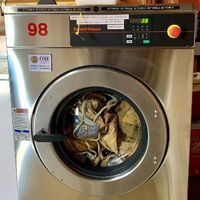
An extractor (above) purges toxins from turnout gear with the power and speed of 100-Gs (one hundred times the force of gravity).
Your support helped the LAFD Foundation purchase these critical systems that clean firefighters’ smoky, ash-laden, turnout gear after an incident. During this fiscal cycle, the LAFD Foundation covered the cost to purchase six new extractors.
"Extractors are a tremendous asset in the fight against cancer since nearly everyone in this Department knows a firefighter who has died of occupational cancer.
Ten years ago, my best friend on the job died of kidney cancer. He was a tenured captain. Since then, it hasn't been just a job; it is my mission to keep as few names as possible from being added to the memorial wall.”
Battalion Chief Scott Quinn
LAFD Risk Management Section
LIFE-SAVING MEDICAL TECHNOLOGY
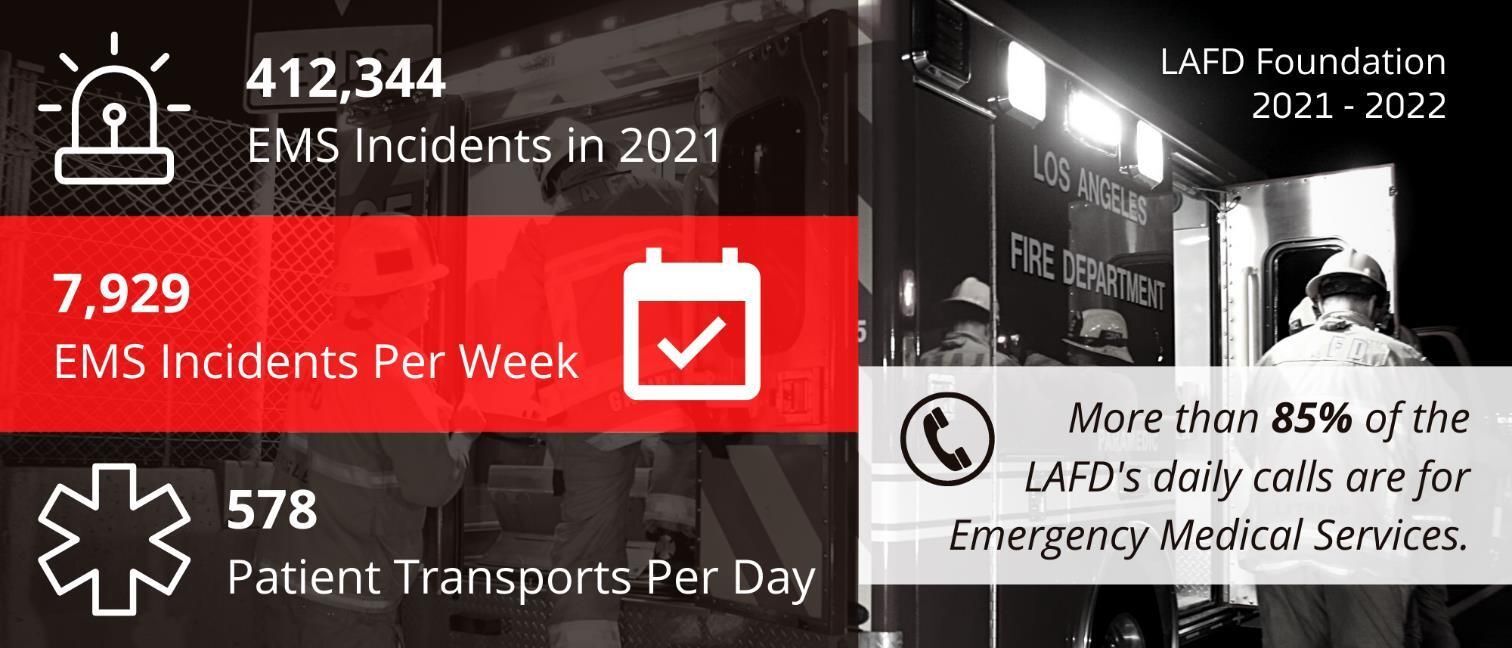
From heart attacks to heat stroke, the LAFD handles pre-hospital care for more than 1,000 medical calls and transports nearly 600 patients to area hospitals each day.
In life-or-death situations, when every second counts, it is imperative that firefighters have access to the best available medical resources. For this reason, the LAFD Foundation helped fund the telemedicine program, which uses medical professionals to triage incoming 9-1-1 calls and dispatch field resources more efficiently. The LAFD Foundation also helped purchase state-of-the-art automated external defibrillators (AEDs) for every LAFD ambulance.
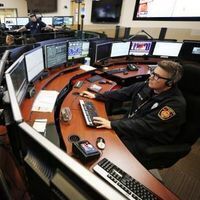
The telemedicine program allows healthcare professionals to evaluate patients remotely, using smartphone technology.
TELEMEDICINE PROGRAM
The LAFD expedited the launch of its telemedicine program with software, licenses and computer equipment provided by the Foundation. More than two years in the making, the program uses physicians, nurse practitioners, and physician assistants to screen potential COVID-19 patients and other individuals calling 9-1-1 with non-life-threatening issues.
Although still in its infancy, the program has reduced the number of low-acuity patient transports, improved deployment efficiency, and helped redirect resources to incidents with the greatest needs.
AUTOMATED EXTERNAL DEFIBRILLATORS (AEDs)
AEDs are used to monitor, diagnose, and treat life-threatening cardiac arrhythmias and sudden cardiac arrests. These devices are designed to analyze the heart rhythm and deliver an electric shock to victims of ventricular fibrillation to restore normal heart rhythm.
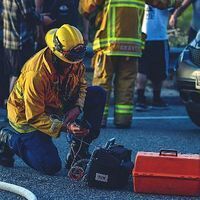
Replacing and upgrading the AEDs used to diagnose and treat life-threatening cardiac emergencies was a top priority for FY21-22.
In the spring of 2022, the LAFD Foundation authorized the purchase of 275 state-of-the-art, wireless-enabled AEDs.
The LAFD’s emergency medical technicians (EMTs) and paramedics will be able to use these life-saving devices on the scene of an emergency or while transporting patients to hospitals and trauma centers.
“As cardiac-related incidents disproportionately affect socio-economically disadvantaged patients and communities of color, these AEDs will undoubtedly assist us in our goal of overcoming the health inequities of cardiovascular emergencies in the years to come.”
Stephen Sanko, MD, FACEP, FAEMS
Acting Chief Medical Officer
LAFD Emergency Medical Services Bureau
WILDFIRE SEASON
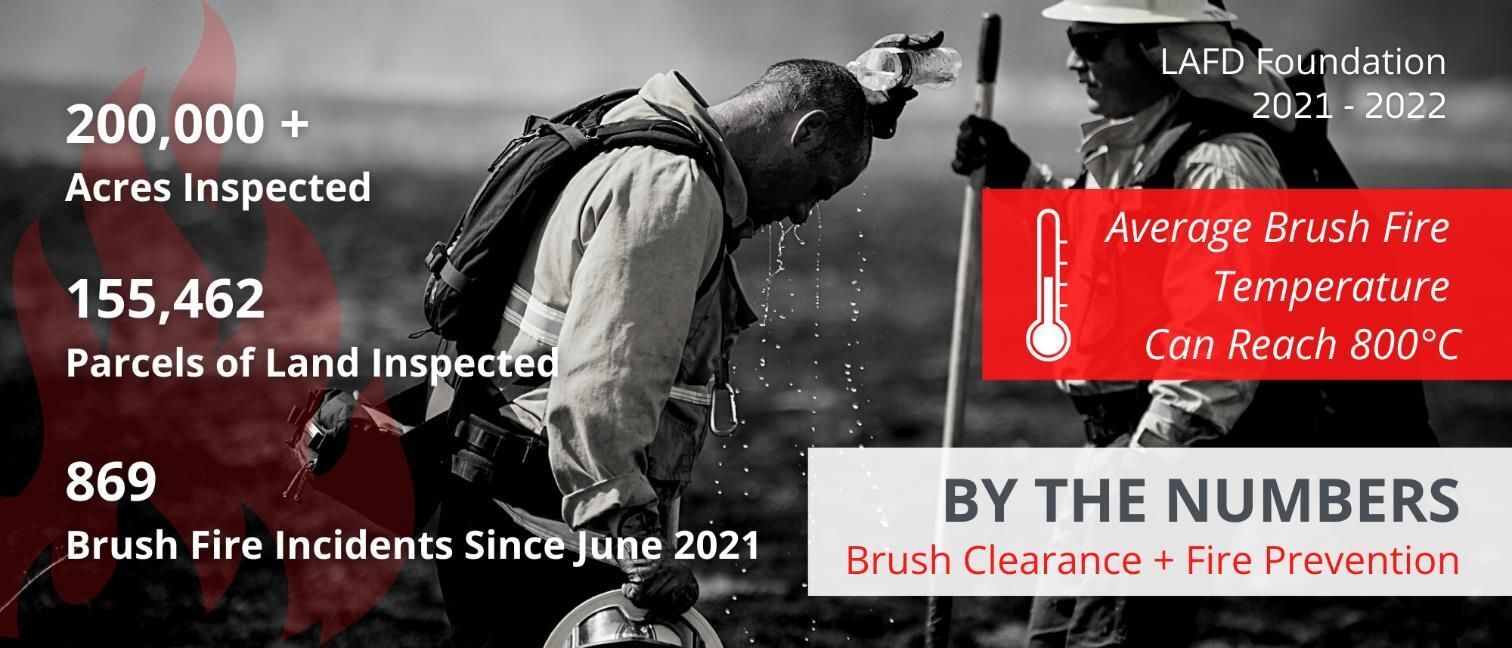
Last fire season, more than 8,600 fires scorched close to 2.6 million acres across California. Thankfully, Los Angeles was spared from a particularly intense outcome, thanks largely to the resources your donations helped provide.
In the months leading into fire season, the LAFD took preventative measures to lessen risks to fire-prone communities and natural spaces. Once fire season hit, the LAFD aggressively attacked those fires to minimize spread and losses. In both cases, the LAFD utilized tools and technology provided by the LAFD Foundation.
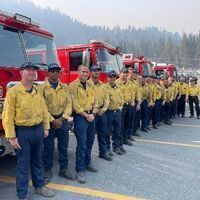
The 20-member strike team that deployed to assist with the Caldor Fire that burned over 221,000 acres of the Sierra Nevadas and destroyed more than 1,000 structures.
In the past 12 months, the LAFD's Fire Prevention Bureau, Brush Clearance Unit (BCU) inspected more than 155,000 parcels and issued 12,165 brush-related citations. Wireless-enabled tablets, software, and other resources were funded to help the BCU achieve a 98% success rate.
Neighborhoods such as the Hollywood Hills, Pacific Palisades, Brentwood, Griffith Park, Sylmar, and La Tuna Canyon still face a year-round threat from brush fires. Thanks to the donated supplies and equipment, the LAFD's Wildland Fuel Management Unit cut and cleared nearly 70 miles worth of fire roads to protect these and other high-risk communities.
STRIKE TEAM GO KITS
A strike team is a viable "mutual aid" resource typically consisting of five engines and 20 to 22 firefighters who specialize in fire suppression in rugged terrain. This past season, multiple teams were deployed to assist with 18 fires in other parts of the state, including the enormous Dixie Fire, which burned a combined acreage larger than the size of Rhode Island.
These strike team Go Kits were equipped with communications gear, weather monitoring instruments, tools,
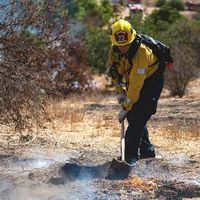
The rhino used by this firefighter is one of several specialized hand tools used to manually snuff out brush fires and hotspots.
WILDLAND BRUSH TOOLS
These light and durable hand tools (e.g., axes, rhinos, pulaskis, wildland shovels) are specially designed to help ground crews cut through tree limbs, clear brush overgrowth, and remove potential fuel sources.
This past fire season, the LAFD Foundation supplied Crew 3 (the LAFD’s volunteer brush clearance crew) and multiple stations with these tool kits.
CREW PACKS
Crew packs haul everything needed for up to 24 hours, including radio equipment, an emergency fire shelter, food, and supplies like batteries, extra chainsaw chains, fuel and hydraulic oil for power tools, and fire fuses. These load-bearing packs are a crew member’s lifeline once they walk away from their vehicle. In anticipation of another destructive fire season, 60 new crew packs were provided.

BRUSH SHIRTS
Brush shirts (pictured in the Crew 3 image above) are a lighter, less bulky variation of a turnout jacket, worn to protect members during physical firefighting tasks in hazardous outdoor conditions, like falling debris and live embers. Donations helped provide new brush shirts for Crew 3 members.
“The LAFD takes a highly aggressive approach to brush clearance and fire containment work because we’re trying to prevent tragedies. We have to use every tool and resource in our arsenal to minimize those risks. The [LAFD] Foundation provided us with some incredible new tools and equipment to help with this fight. Without the support of donors and our community, L.A.’s hillside neighborhoods would be facing far greater fire risks.”
Captain Rich Diede
Commander of the LAFD’s Wildland Fuel Management Unit
YOUTH EDUCATION + TRAINING
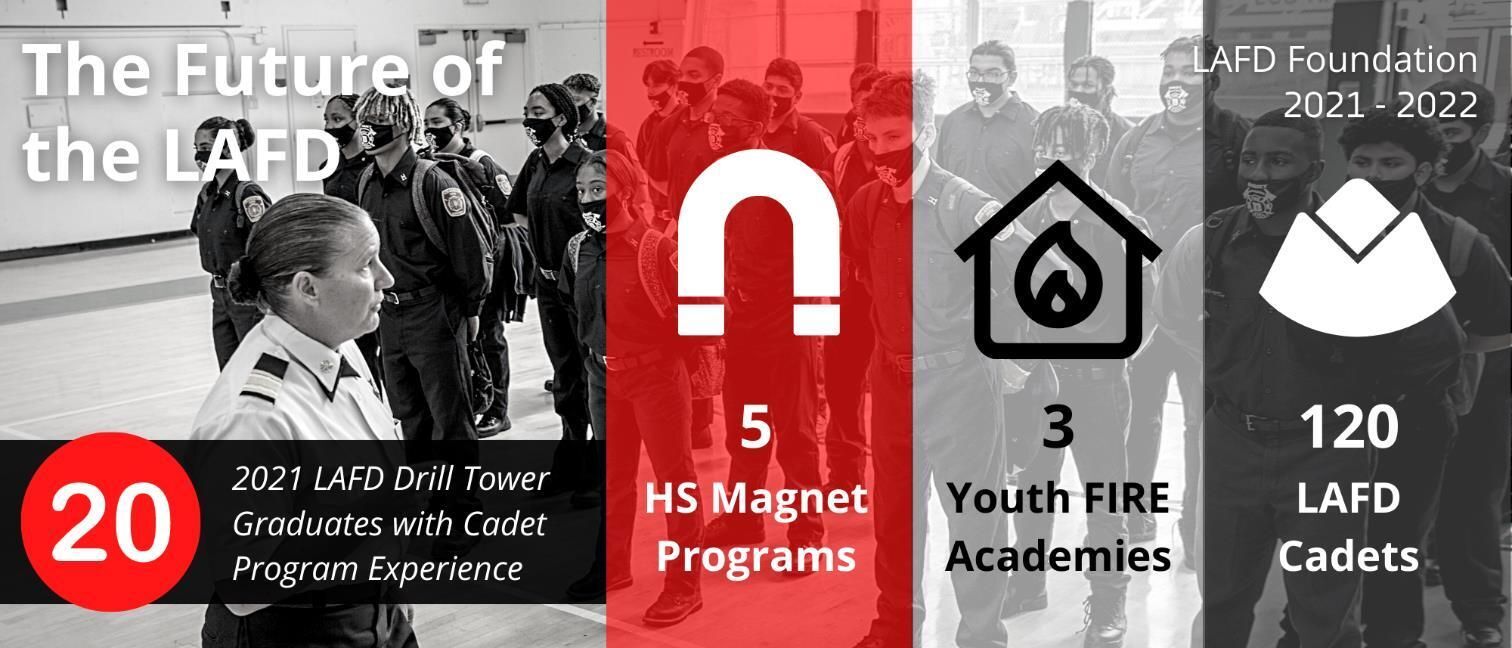
As the effects of the pandemic slowly retreated and public health protocols eased, the LAFD Foundation resumed funding for vital youth recruitment and outreach programs administered by the LAFD. These programs offer teens and young adults the opportunity to explore careers in the fire service while they develop skills in leadership, teamwork, and overall confidence.
Pandemic restrictions significantly impacted the ability to offer these hands-on programs. Thankfully, the LAFD’s High School Magnet and Cadet programs are back in operation. Girls Camp and Youth FIRE Academies are projected to resume in 2023.
Funding from the LAFD Foundation supports the Department’s long-term recruitment efforts to hire local candidates that reflect the diverse communities served by the LAFD. Growing numbers of newly hired LAFD recruits and drill tower participants credit the youth programs as the life-changing catalyst that propelled them towards a career with the LAFD.
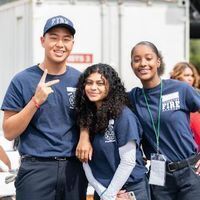
All five LAFD high school magnet programs reported a 100% graduation rate among participating seniors in 2022.
The LAFD Foundation awaits the return of two impactful youth programs (Girls Camp, and the Youth FIRE Academies) in the next fiscal cycle.
The following programs were funded during the FY21-22 cycle:
- Cadet Program | 120 FY21-22 Participants
Designed for 14 to 20-year-old individuals who are serious about pursuing a career with the fire service. The program resumed in 2022 after a two-year hiatus.
- High School Magnet Program | 968 FY21-22 Participants
Prepares Los Angeles Unified School District students for entry-level careers and post-secondary education in the field of public service.
“My brother and I joined the LAFD cadet program as teens. It sounded like something fun and different to try. Looking back, it was one of the best decisions of my life. I was exposed to so many great experiences, met incredible mentors, and gained skills that I still rely on today. Most importantly, the program instilled a sense of pride and purpose that comes from helping others. It is great to see the [LAFD] youth programs flourishing, and hopefully inspiring the next generation of firefighters.”
Firefighter Edgar Garcia
LAFD Fire Station 27, Hollywood
For more information about the items or programs highlighted above, please contact:
Tara Gurlides, Development Director
(310) 552-4139 | Tara@supportLAFD.org
Photo credits: Gary Apodaca, Henry Berkson, Austin Gebhardt, Leo Kaufman, Mike Meadows, and the Los Angeles Fire Department


